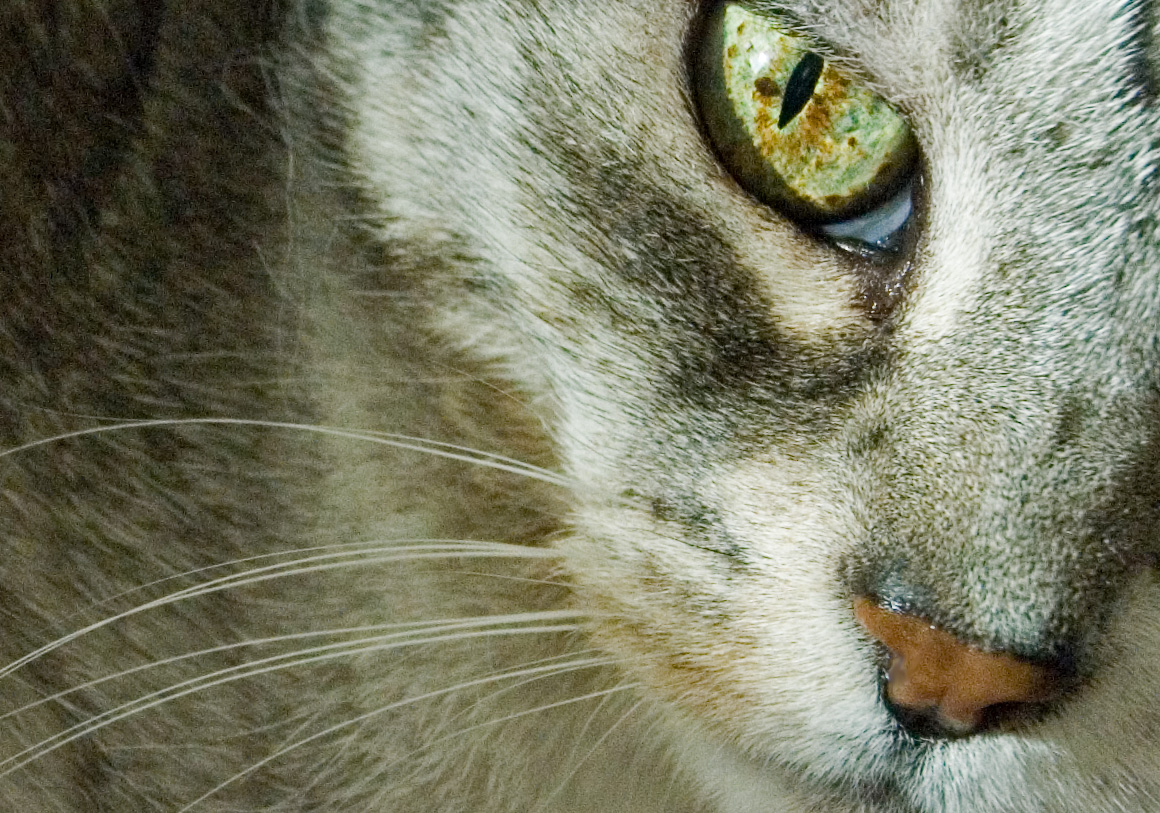Dumping photo disc.
The birthday cake my roommate got me last week.

Zoe, giving me the ‘eye’.

Squirrel nest and today’s first frozen rain.

Dumping photo disc.
The birthday cake my roommate got me last week.

Zoe, giving me the ‘eye’.

Squirrel nest and today’s first frozen rain.

The discussion thread just mentioned in the last story is also a good demonstration of what can happen when newspapers and other localized publications open up discussion threads. In particular, the St. Louis Today site, which runs its weblogs using WordPress, doesn’t put much in the way of restrictions on comments. What’s happened is a group of people have moved into the discussion area and setup housekeeping.
You can’t read a thread where it isn’t dominated by people like robsmyth and others, with their own insider language and discussion–usually only incidentally related to the topic.
An update on my recent difficulty with Amazon: I received the product, but the company still showed it as ‘in process’, to be shipped in January. It took four emails and finally a phone call to get this one removed so that I wouldn’t get shipped another.
On the other hand, when we opened the second season of a TV show my roommate purchased (through my account), we found three duplicate disk 1′s and a missing disk 2. Since we had bought the series over two months ago, I wasn’t expecting Amazon to replace it, but they did–sending out a replacement season via 1 day shipping, and a pre-paid mailer to return the defective one. Now that was good customer service.
Ooops, spoke too soon. The item I’ve been trying to get removed has reappeared on my ‘to be shipped’ list.
Unlike that shown at Best Buy: Recently, a Missouri couple bought an expensive camcorder, but when they got it home and opened the box, they found a jar of pasta sauce instead. $1600.00 for a jar of pasta sauce was a bit much. The Best Buy store would not provide a replacement, and eventually Sony ended up replacing the camcorder because of the publicity. Sony did make a point that the only reason they stepped in was Best Buy wouldn’t–there was no way this item would be shipped as it was, because the camcorder comes from Japan, and that type of pasta sauce is rare in Japan.
According to another St. Louis Today story, this is typically the result of a ‘returned item’ scam, where a person buys a new item, replaces it with worthless items of equal weight, tapes up the box and returns the item for a refund. The store’s employees don’t have the time (or don’t take the time) to ensure it is the proper item returned, and just restocks the item.
Many stores will make good when this happens, but I gather from a few of the more coherent entries in a discussion thread, Best Buy is not one of them. In fact, from the stories, I gather that Best Buy thinks if you sell something cheap enough, you don’t need to provide customer service. I’ve not had problems with Best Buy purchases, but I have returned an item and noticed that the customer service person did not check to ensure what I returned was the actual item. Before you ask, no it was not a camcorder.
A good rule of thumb seems to be if you’re making a closed box purchase at Best Buy, for yourself or as a present for someone else, you might want to open the box and check the contents before you leave the store. In fact this is good advice for buying more expensive electronics at any store: open the box, make sure everything is there before you leave the store. Oh, and try not to get arrested for having a big knife or box cutters along.
Another person in the thread mentioned about having problems with Sears. I stopped shopping at Sears when I read the story of the company sending a representative to a bankruptcy proceeding in order to demand that the used toaster and other items of this nature bought on a Sears credit card be returned.
I also wanted to post a link to Mike Golby and his beautiful photos of South Africa. Unfortunately, these may be it for a while, as his car was stolen today.
Of the event he writes:
The snaps I’ve been able to catalogue over the past eight months have, frequently, felt like my documenting of the end of something. I’m not sure what; but that’s the way it’s felt to me. The end of a city’s innocence, the end of the democratic dream, the end of ‘sharing’?
I guess the latter says it best. The forced redistribution of wealth, where those ‘without’ are as much victims as those who ‘have’ in abundance, is not sharing. Theft is brutal, violent, and barbaric. And it reflects an abysmally ugly side to our society.
The ruthless, cunning, and mercilessly vicious way in which those who ‘have’ cling to obscene wealth reflects this horror as clearly.
It was my father’s car and it had great sentimental value. I do hope his spirit drives the bastards who pinched it into a tree, but I hope so in a detached way — having no knowledge who these assholes are. Were they to return it, I’d probably thank them and carry on as normal.
Anne writes today on the coming proliferation of applications combining Ajax and Flash, and where the direction may go:
What tools will be important, if hybrid Ajax + Flash + Java browser apps are the future? Perhaps toolkits and frameworks that shield developers from having to know multiple languages, object models, and browser quirks, for example, OpenLaszlo, the Google Web Toolkit, and Morfik. Abstracting the web development task like that, though, introduces its own problems.
I’ve never been a ‘framework’ person, preferring control over every aspect of my code. I’ve used frameworks, just never felt a level of comfort. To me for all the advantages of such toolkits, the disadvantage of increased bloat in code, inability to debug, and loss of fine control outweighs the benefits. Which means that I really do need to take a closer look at the tools, before I allow my natural bias to distance me from what could be handy technologies.
It’s going to be interesting to see where this goes. In particular, with the growing partnership between Mozilla and Adobe, we’ll definitely see an impact on Ajax.
I also want to extend congratulations to Anne on her new gig with Web Worker Daily.